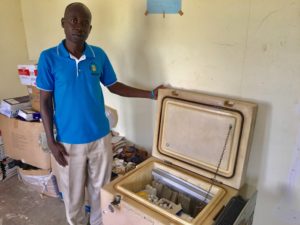What are some infrastructure barriers for children receiving vaccines?
Weather conditions like excessive rain can cause washing out of roads and bridges, leaving cars and motorcycles carrying vaccines unable to pass or reach more remote areas for delivery. Electricity is also a huge aspect of the cold chain trail and is needed for clinics to power refrigeration to cool vaccines. Many vaccines need to stay cool throughout the transportation process and once they arrive at clinics, or else they may spoil. However, many clinics around the world still lack access to power, which makes the cold chain trail difficult to carry out.
What are some innovative solutions?
The UPS Foundation has started a pilot program of utilizing drones to send vaccines, blood, and emergency medical supplies to villages and towns in hard-to-reach areas. This has enabled small clinics, which may be unreachable by car or motorcycle, to obtain essential vaccines, and quickly. SMS (Short Term Messaging) has also been an innovative solution used to send families reminder texts in advance of their children’s upcoming doctor’s appointments and vaccine scheduling. In several new case studies, reminder text messages have increased the number of children vaccinated in towns, as well as increasing doctor’s appointments.
As Shot@Life works to advance SDG 3, we will also keep in mind how crucial the tenets of SDG 9 are to ensuring that all children have access to lifesaving vaccines.


